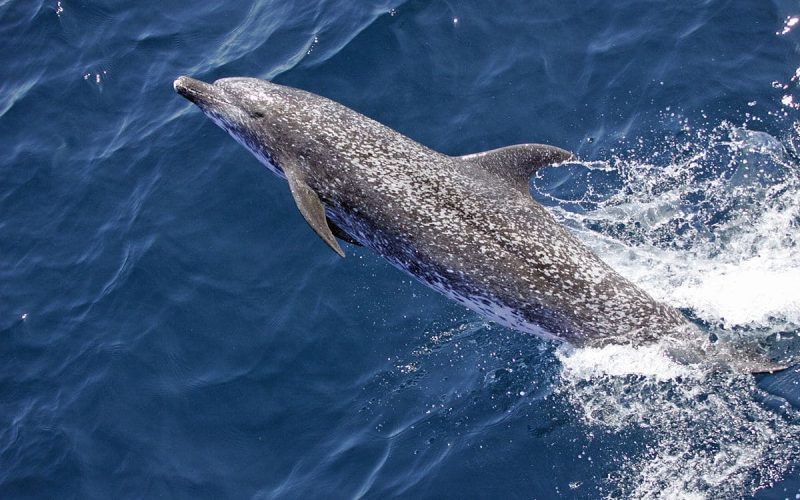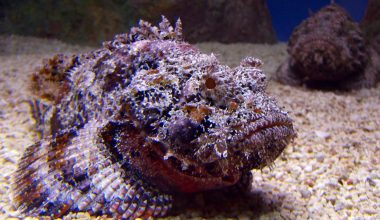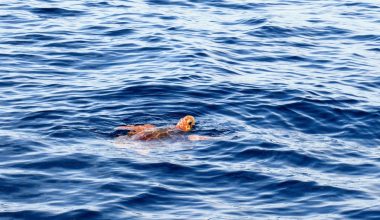Most likely, when you see a dolphin, you picture a long-nosed grey bottlenose dolphin that smiles and plays with a red ball in an aquarium. There are numerous species of dolphins swimming throughout the world, though. We’ll introduce you to 10 of the most fascinating dolphin species in this article. We’ll delve deeply into everything dolphin-related and talk about what makes each species of dolphin special. Here is the list of 15 different types of dolphins,
Different Types of Dolphins In The World
1. Oceanic Dolphins
The distinction between dolphins that live in rivers and those that do not is the simplest way to group all dolphins around the globe. The majority of dolphin species spend their whole lives in one of these two types of aquatic bodies, however, some occasionally cross the boundaries between rivers and oceans.
What you should know is as follows. Oceanic dolphins, as their name suggests, are found mostly in water. Ocean dolphins make up the vast majority of the dolphin species on Earth, however, not all of these species are well-known to researchers. Here are 19 of the amazing oceanic dolphin species found in the world.
Also Read: 10 Apex Predators in the World
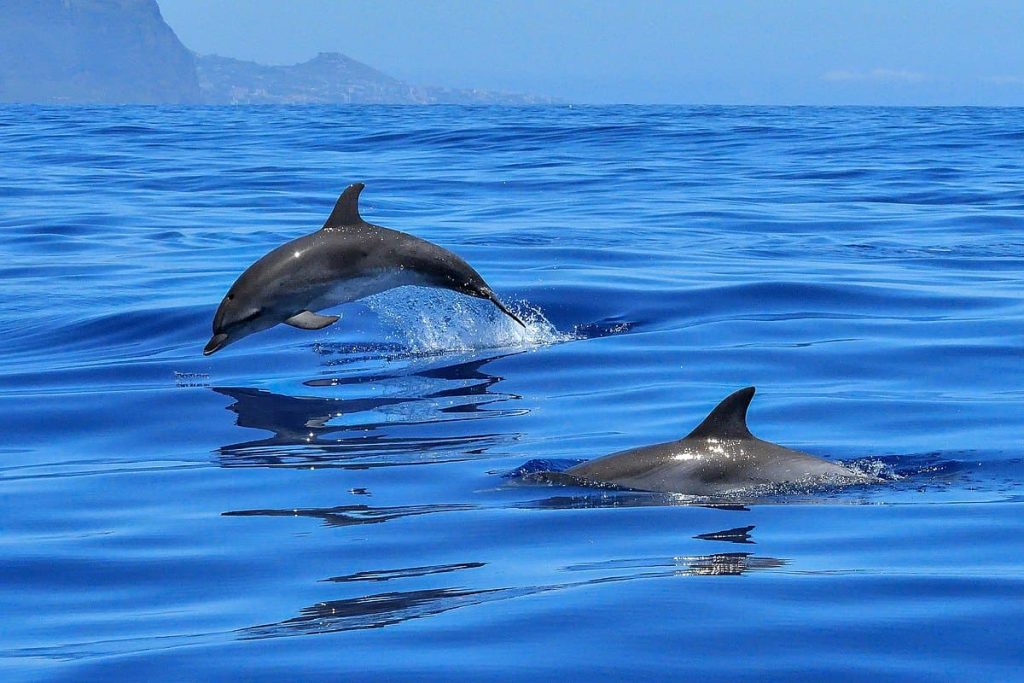
Image Source: Wikimedia
2. Dusky Dolphin
The dusky dolphin (Sagmatias obscurus) is a mid-sized cetacean that primarily inhabits coastal waters near South America, southern Africa, Australia, and New Zealand. It is best known for its amazing aerial behaviors. One of the amazing different types of dolphins comes with its black back and white underbelly, the dusky dolphin’s coloring often resembles that of the Pacific white-sided dolphin. The dusky dolphin has larger concentrations of grey in its white patches, though. Additionally, compared to other dolphins in its range, it typically has a longer, narrower rostrum (beak).
Also Read: 16 Amazing Aquatic Animals In The World
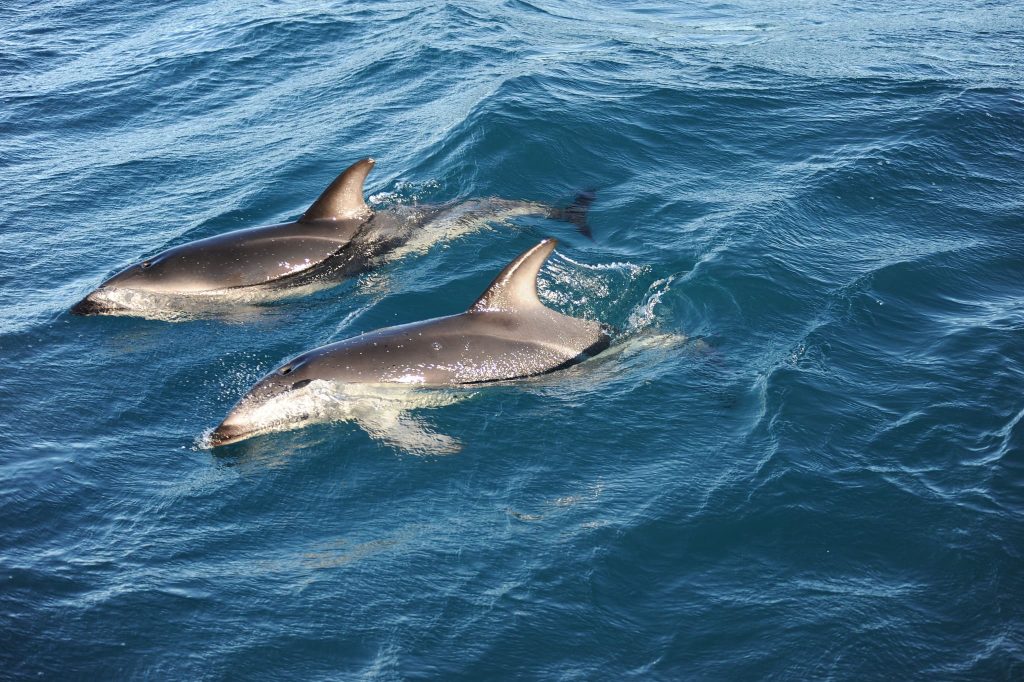
Image Source: GRID-Arendal
3. Hourglass Dolphin
The hourglass dolphin (Sagmatias cruciger), despite many dolphin species having widespread distributions worldwide, is only found in arctic and sub-arctic seas. Only fishing boats, research ships, and tourist boats typically see it when they go through the Drake Passage between Argentina and Chile to the Antarctic Peninsula. Due to its characteristic black body with a white hourglass-like pattern, the species is rather simple to recognize across its range. The hourglass dolphin has a distinct dorsal fin and can be mistaken for the southern right whale dolphin.
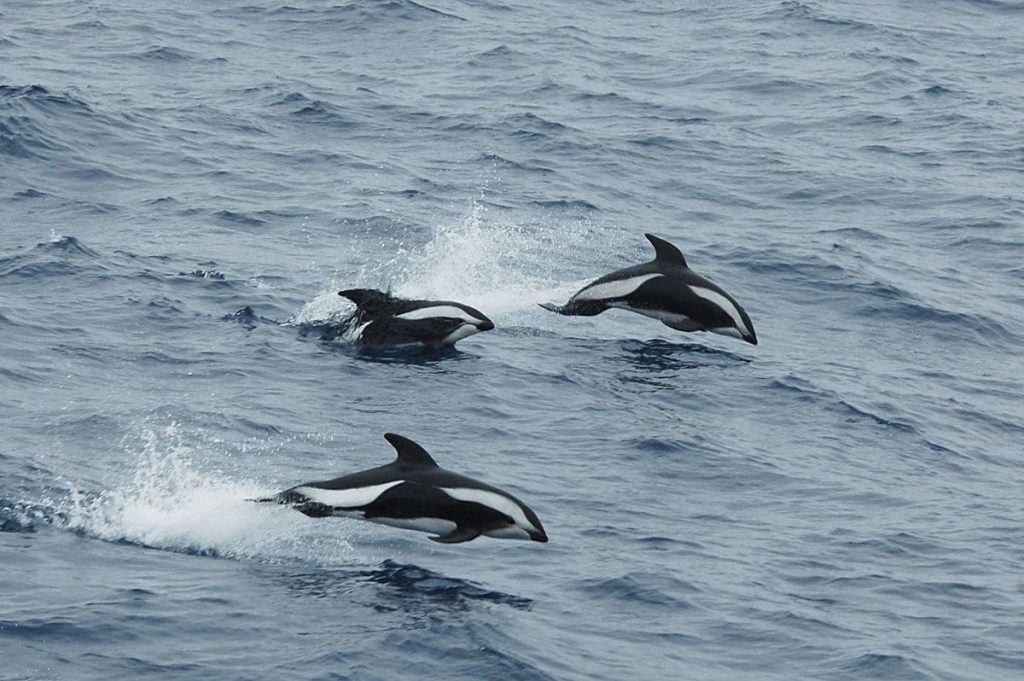
Image Source: Wikimedia
4. Orca
The orca is the largest species of dolphin, reaching lengths of up to 26 feet (8 meters) and weights of over 7,000 pounds (3,175 kg). Orca sizes do, however, vary quite a little because there are at least 4 distinct species of orcas that can be found in various oceanic regions. Even though orcas are among the most well-known dolphin species on the planet, little is known about them. Nearly every ocean in the globe, even the arctic oceans, is home to these elusive dolphins. However, there is simply insufficient data on their populations to determine whether the species is in danger.
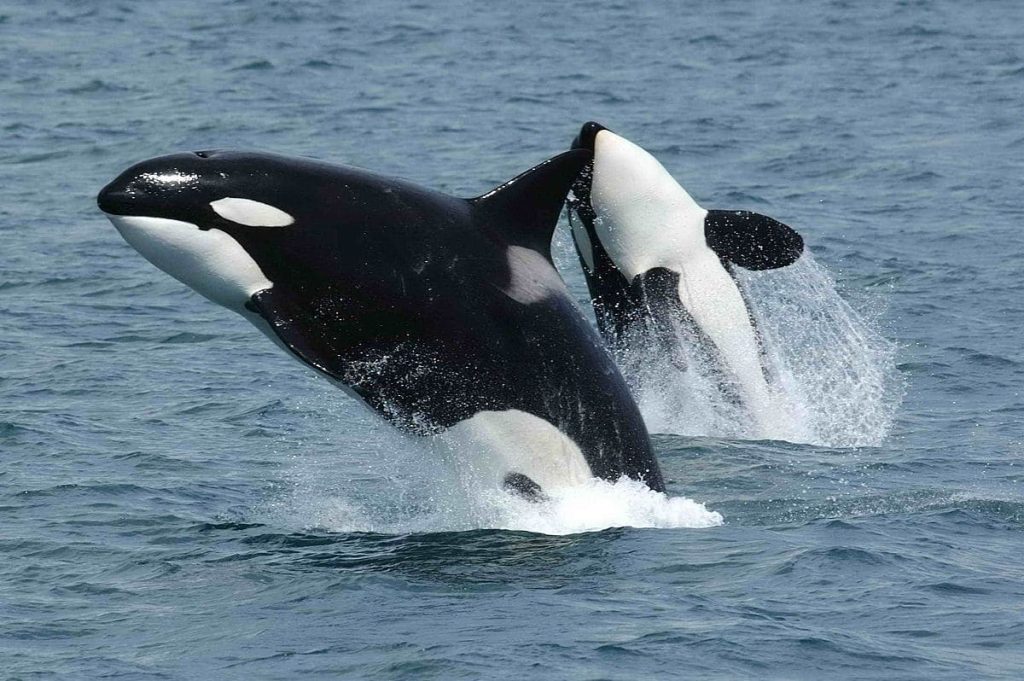
Image source: Wikipedia
5. Hector’s Dolphin
The Hector’s dolphin (Cephalorhynchus hectori) is the tiniest and most endangered dolphin species on the planet. It only inhabits the coastal waters of New Zealand. The Hector’s dolphin has two recognized subspecies: the South Island Hectors and the M’ui dolphin, which is found on the western coast of the North Island. The smallest marine dolphin is named after Sir James Hector, a New Zealand scientist, who was the first to seriously explore the species.
By dolphin standards, these cetaceans are very small, reaching lengths of only about 5 feet (152 cm) and weights of only about 130 lbs (60 kg). They lack a recognizable beak, but they do have a distinctively rounded dorsal fin and a light grey skin tone. The primary diet includes flounder, red cod, and mackerel, however, they also feed on crabs and squid. The avarage lifespan of the hector dolphin is upto 20 years.
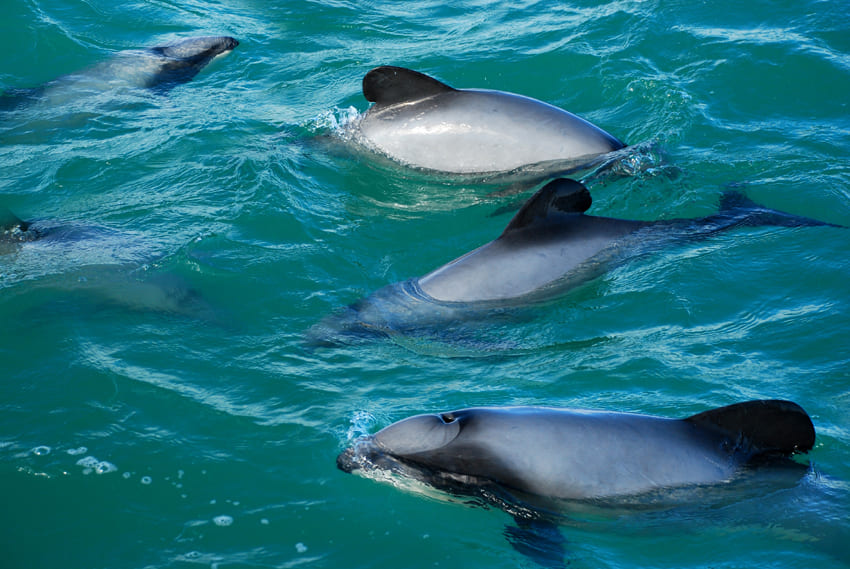
Image Source: Geof Wilson
6. Commerson’s Dolphin
The Commerson’s dolphin (Cephalorhynchus commersonii), a small cetacean that only inhabits southern South America and the Kerguelen Islands, is also known as the jacobita or the panda dolphin. Most frequently, the species is seen in the Beagle Channel near Tierra del Fuego and the Falkland Islands (Islas Malvinas). Due to the contrast between their distinctive black heads, dorsal fins, and tails and their all-white bodies, they are typically simple to spot within their range.
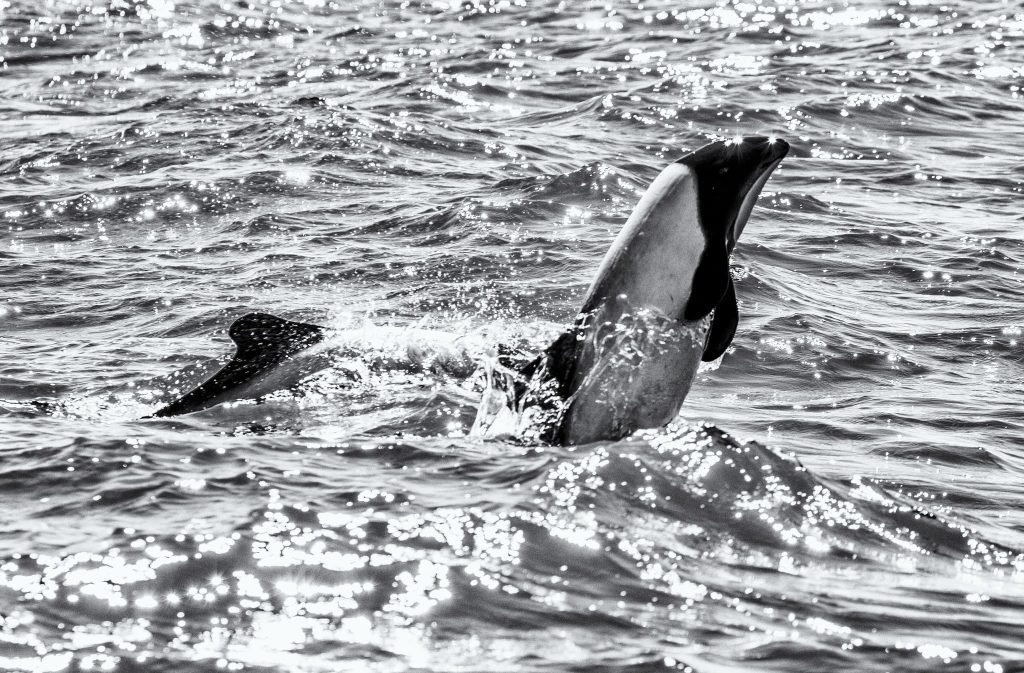
Image Source: Baron Reznik
7. Spinner Dolphin
The spinner dolphin (Stenella longirostris), a tiny cetacean that can only be found in tropical and subtropical waters, is renowned for its prowess in acrobatics. The spinner dolphin also referred to as the long-snouted dolphin, has four recognized subspecies, the majority of which can be distinguished by their respective geographic ranges.
The so-called twilight zone of the water is where spinner dolphins prefer to eat their prey. To catch fish, it will dive as deep as 1,000 feet (300 meters). However, some spinner dolphin subspecies prefer to only eat at night, and other spinner dolphin subspecies prefer to eat in groups as opposed to individually.
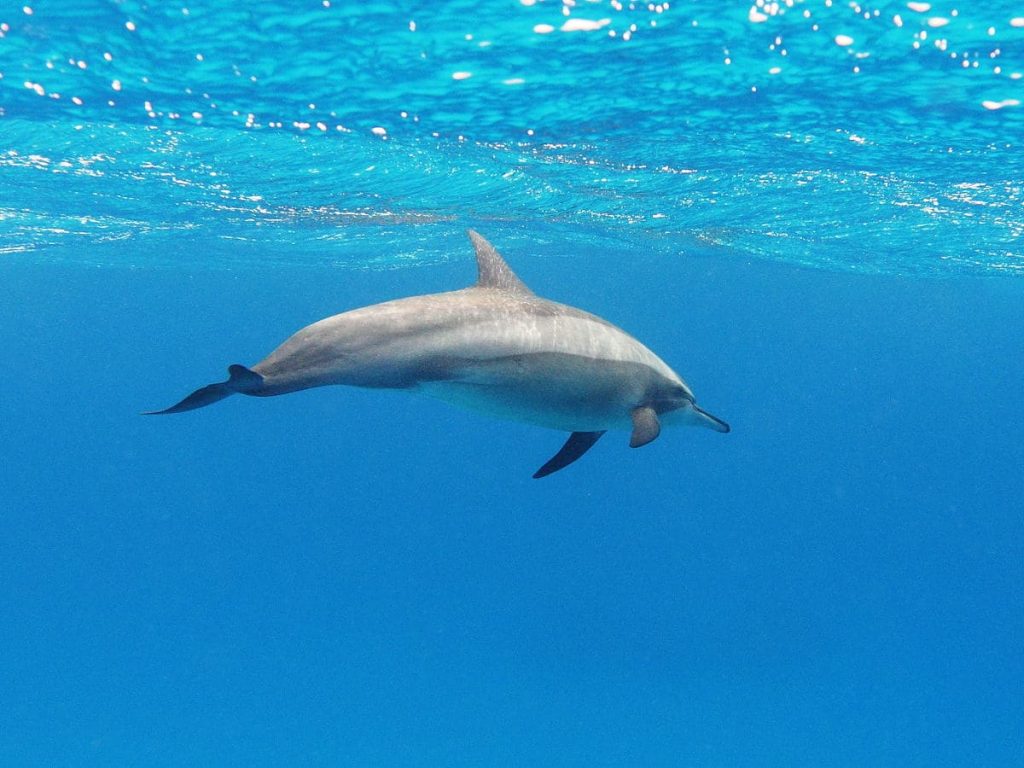
Image Source: Wikimedia
8. Irrawaddy Dolphin
The Orcaella brevirostris, often known as the Irrawaddy dolphin, is a rare and fascinating oceanic cetacean that is found in several distinct populations along the coast of southeast Asia. It was once thought to be a subspecies of the Australian snubfin dolphin, but since 2005, it has been recognized as a distinct species.
The Irrawaddy dolphin has a dark grey back and a light grey underbelly for the most part. It lacks a beak and has a tiny, rounded dorsal fin. It also has a rounded forehead. Despite having similarities to belugas in many aspects, Irrawaddy dolphins cannot be mistaken for them in the wild due to their very distinct habitats.
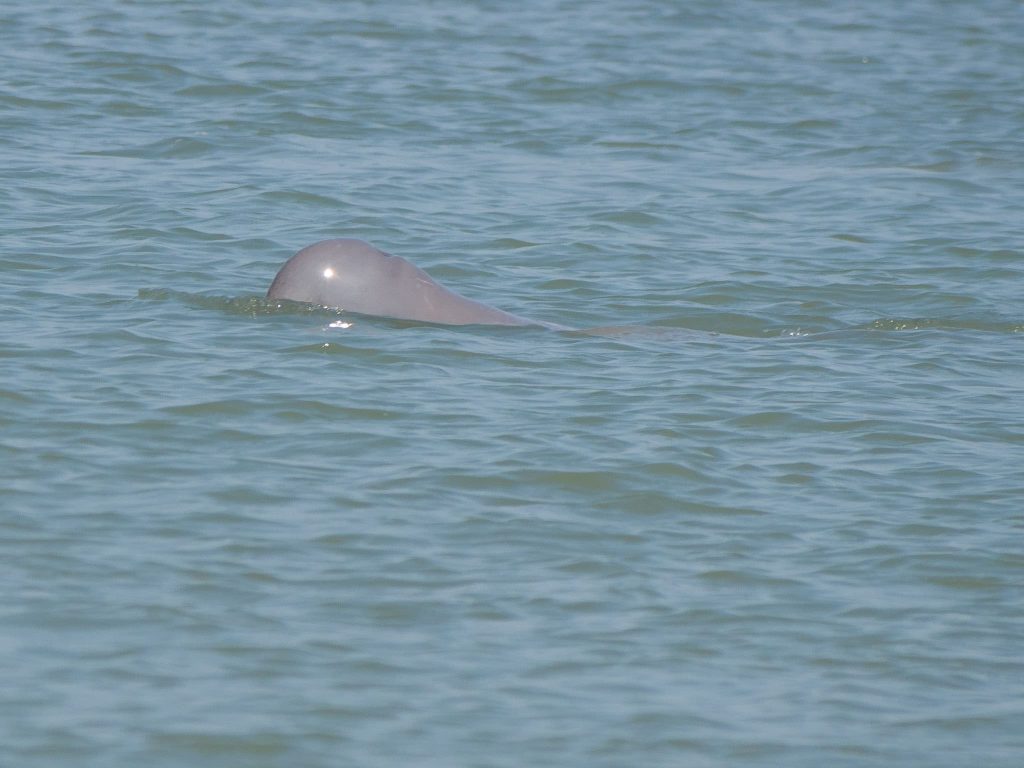
Image Source: Mike Prince
9. Long-finned pilot whale
Long-finned pilot whale scientifically known as Globicephala melasis the second-largest dolphin species after the Orca. The dolphin species can reach over the length of 22 feet and the average weight is over 2,000 pounds. These whales can be easily identified because of their unusually long pectoral fins.
It was believed that the dolphin species got thier name from a “pilot” or lead individual in their groups. The type of dolphin was first classified in 1809 by Thomas Stewart Traill and given the name “Delphinus melas”. The avarage lifespan of long-finned pilot whales is between 35 to 45 years for males and upto 60 years for females.
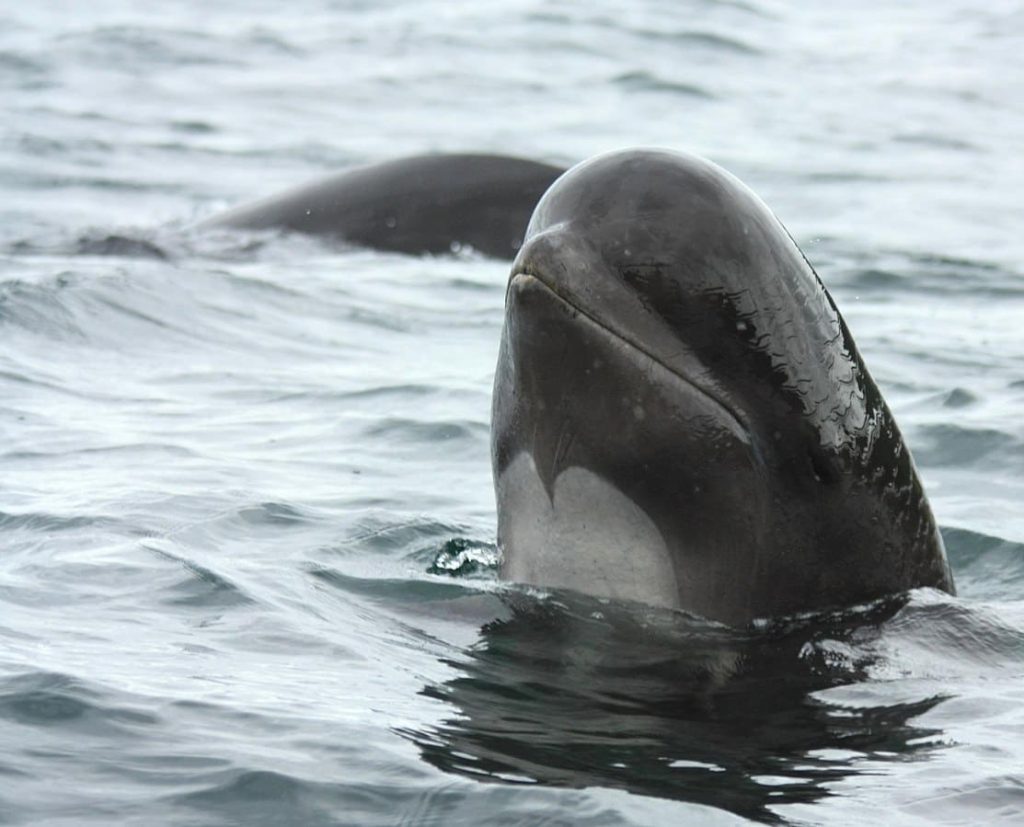
Image Source: Wikimedia
10. Atlantic Spotted Dolphin
The Atlantic spotted dolphin (Stenella frontalis), one of the most commonly recognized cetaceans, is a rather large dolphin that inhabits the tropical and temperate Atlantic Ocean. Although it is frequently sighted in the Bahamas and the Gulf of Mexico, it can also be found as far north as Cape Cod. It’s interesting to note that the Atlantic spotted dolphin does not have its distinctive spots at birth.
Instead, these different types of dolphins typically have a greyish-white coloration at birth that gradually changes to include mottled grey and black spots as they age. A dolphin with more spots is typically an older dolphin because this transition typically occurs before the age of nine.
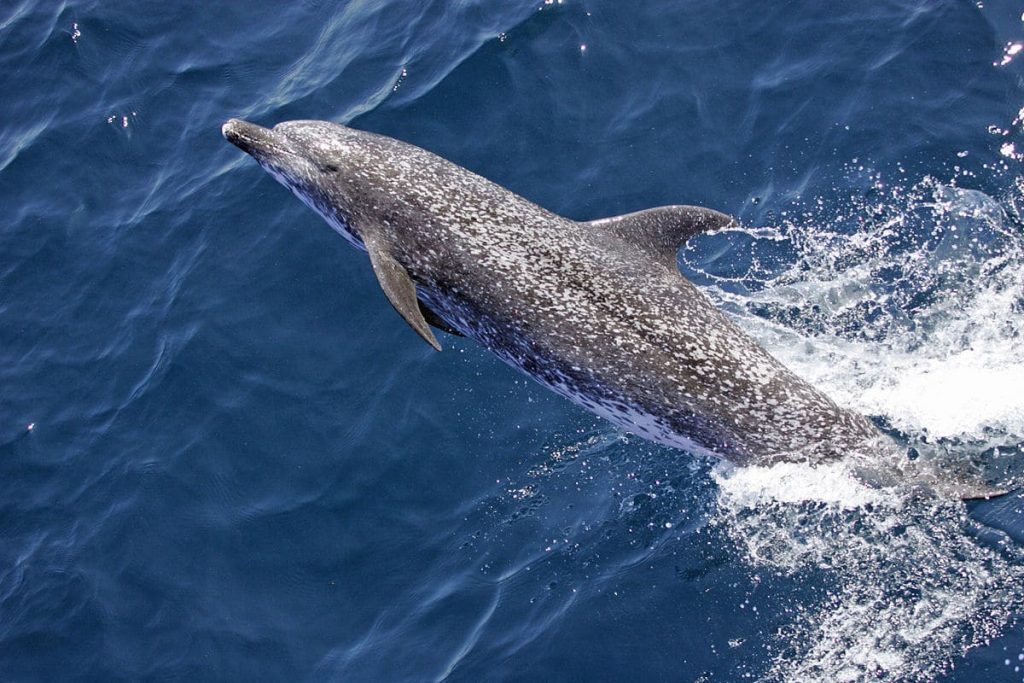
Image Source: Wikimedia
11. Amazon River Dolphin
One of the different types of dolphins, The Amazon River dolphin is a toothed whale and also the largest species of river dolphin. The body length h ranges between 2 to 2.6 cm in length and the average weight is between 100 to 160 kg. It can swim with an avarage speed of 30 km/h and has one of the widest-ranging diets among toothed whales. The dietary habits are carnivores in nature and feed on crustaceans, fish, and crabs. The avarage lifespan of the Amazon River dolphin is upto 30 years.
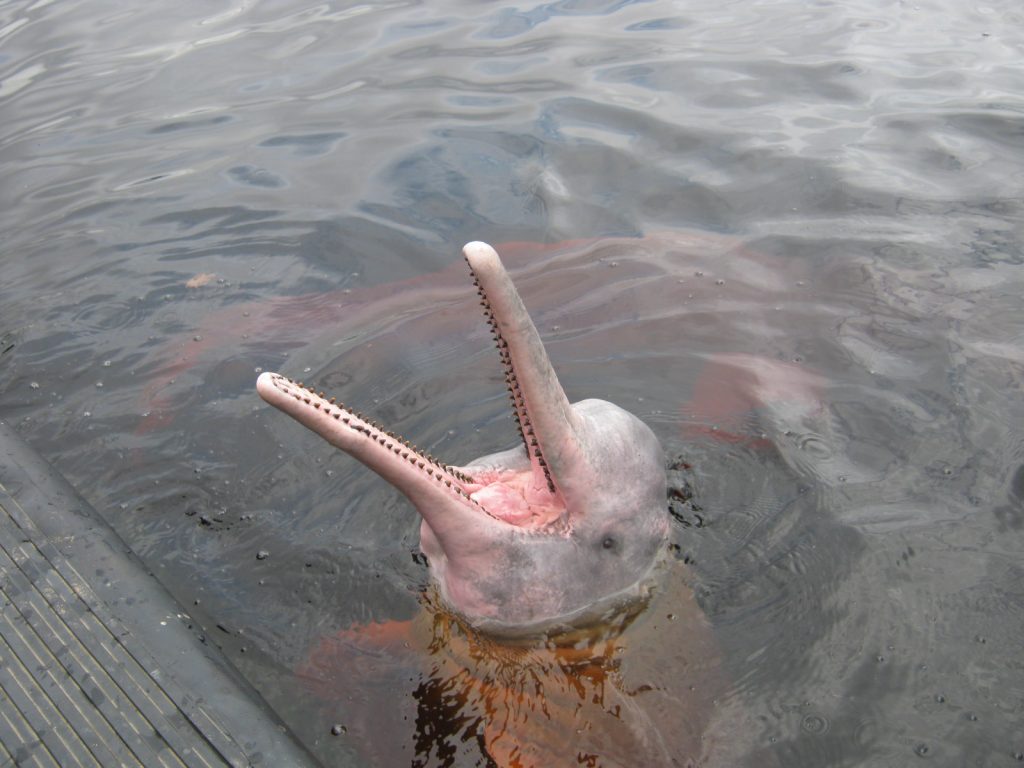
Image Source: Wikimedia
12. Striped Dolphin
The striped dolphin is a studied dolphin species mostly seen in temperate and tropical waters across the world. The dolphin species belong to the oceanic dolphin family, Delphinidae. The body length of stripped dolphin species ranges between 2.4 to 2.6 m in length and the average weight is between 150 to 160 kilograms. The average lifespan of a stripped dolphin is between 55 to 60 years. The dolphins are opportunistic feeders and prefer fish, cephalopods, and crustaceans.
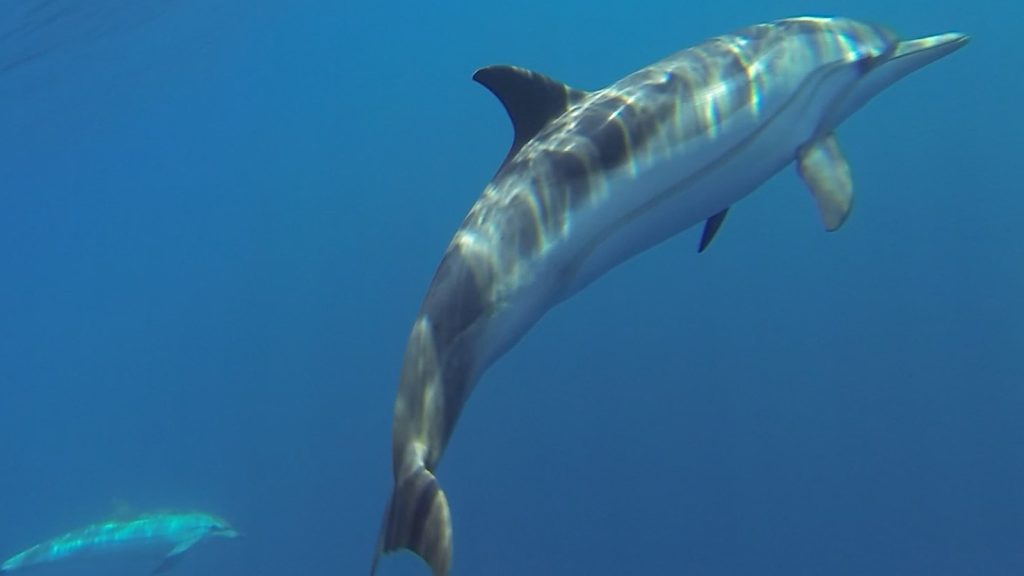
Image Source: Wikimedia
13. Baiji
The baiji is possibly extinct species of freshwater dolphin. The body length of the Baiji species is between 2 to 2.5 m in length and the average weight is between 135 to 230 grams. The avarage top speed of Baiji in water is upto 60 km/h and is also known as the “Goddess of the Yangtze”. The species is native to the Yangtze River of China and is most visible in the middle and lower reaches of the Yangtze from Yichang in the west to the mouth of the river. The avarage lifespan of Baiji is upto 24 years. It is one of the different types of dolphins in the world.
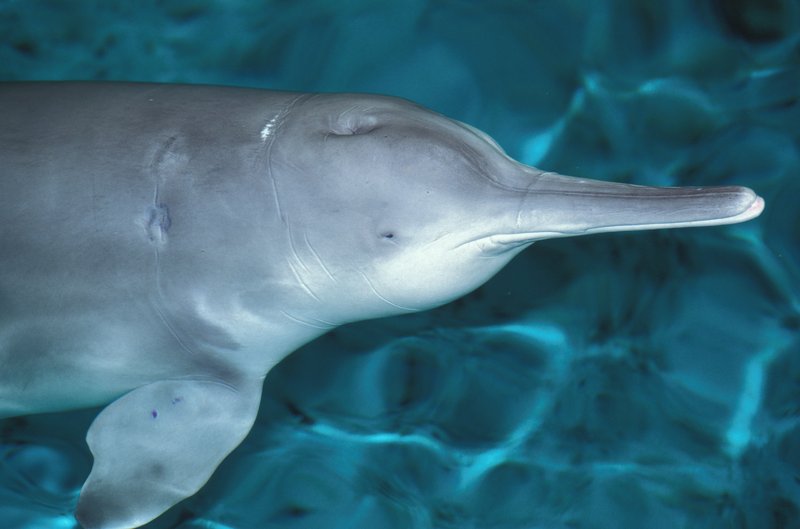
Image Source: Wikimedia
14. South Asian river dolphin
The South Asian river dolphin is one of the two species of toothed whales that belong to the genus Platanista and the family Platanistidae. The body length of the South Asian river dolphin is between 2 to 2.6 meters and the average weight is upto 85 kilograms. The endangered freshwater dolphin is found in the region of the Indian subcontinent. The dietary habit is carnivores in nature and feeds on a variety of shrimp and freshwater fish, including carp and catfish. The avarage lifespan of the South Asian river dolphin is upto 28 years.
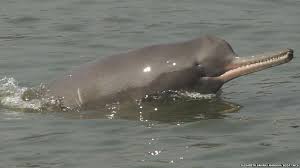
Image Source: Wikipedia
15. Indo-Pacific humpbacked dolphin
The Indo-Pacific humpbacked dolphin is mostly seen in the waters of the Eastern Indian and Western Pacific Oceans. The body length ranges between 1.8 to 3 meters and the average weight is between 250 to 280 grams. It is also known as the Chinese white dolphin in mainland China, Macao, Hong Kong, Taiwan, and Singapore as a common name. They are usually found in small groups and hunt as a group using echolocation. The avarage lifespan of an Indo-Pacific humpbacked dolphin is upto 40 years.
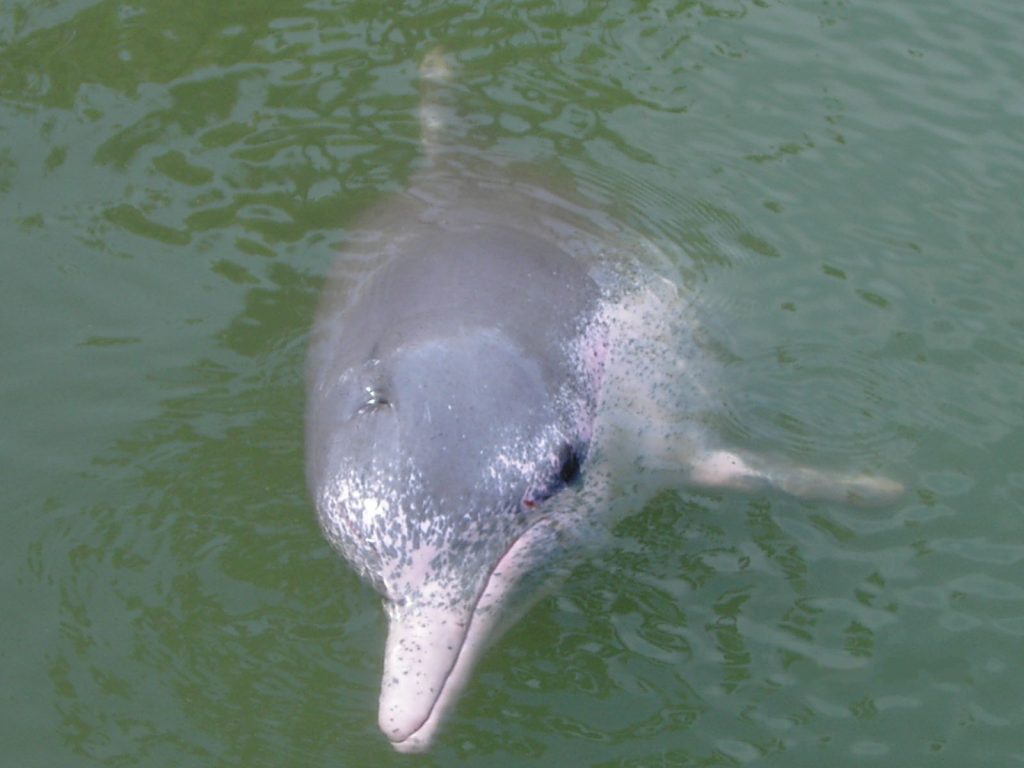
Image Source: Wikipedia
These are the 15 different types of dolphins in the world. Kindly share and do post your comments.
